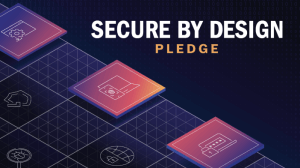If you’ve been following IBM’s strategic moves over the past 6 months in data and analytics, it’s hard not to have some concerns. The announcements they’ve been making this year err on the side of excessive caution. What they illustrate is IBM Analytics’ ongoing retrenchment into mainframes, private clouds, and end-to-end data governance.
IBM seems to be re-crafting its core portfolio but is struggling to introduce new, groundbreaking ideas that might propel the company into data analytics high growth sectors. The clearest recent evidence for this was last week’s announcement that IBM would adopt Hortonworks’ Hadoop distribution and migrate customers away from its own distribution, BigInsights. This is essentially an admission that Big Blue’s own Hadoop distribution has failed to gain significant traction and that, even if it had, Hadoop has become a low-margin, non-differentiating market segment. This was obvious to most observers at least two years ago.
There’s more evidence. Every June for the past several years, IBM Analytics has held a signature event in which it announced significant new investments and partnerships in promising segments such as Apache Spark, open analytics platforms, and team data science. This past week’s event in Munich was the latest such shindig, but it turned out to be somewhat of a disappointment and certainly not a revelation of any splashy new initiatives. Though machine learning and data science were the ostensible banner topics, the only announcements that really addressed these areas were fairly mundane. IBM announced that it is now offering cloud-based access to its Data Science Experience workbench from its London data center and that they’ve established a hub in Germany to collaborate with customers on machine learning projects.
One has to ask, “is that all?” Why were there no enhancements, customer case studies, or other mentions of the two machine learning services (Watson Machine Learning in IBM Cloud, IBM Machine Learning on z/OS) that the vendor launched in the past nine months? Why was there little mention of Watson Data Platform, the team data science platform that it introduced to much fanfare last fall? As the company largely responsible for propelling AI to mainstream adoption, why did IBM have virtually nothing to say about new Watson cloud services, or about its PowerAI software toolkit, or about its plans to support TensorFlow and other deep-learning tools into its development tool portfolio? What if anything new does IBM have to offer to the growing community of Spark developers? These were just some of the questions we left asking.
For developers of cloud-based analytic applications, IBM’s primary announcement in Munich was that it has updated the free DB2 Developer Community Edition. The focus of this release, as IBM Analytics GM Rob Thomas stated on theCUBE, was “download and go” speed and simplicity for developing non-production data-driven applications (which may be deployed into production only if customers also license the premium Enterprise Edition). To be fair, in addition to greater simplicity, there is something noteworthy about this updated community edition in that now enables containerized DB2 apps to be plugged right into a Kubernetes orchestration infrastructure for cloud-native deployment across distributed data centers.
However, in my view, if IBM thinks these incremental feature enhancements will make developers flock to DB2 on Cloud, it needs to make a better case than it did at this week’s Munich event. The vendor also announced new features for DB2 on Cloud—including JSON support and a new storage and performance management tool—but those were humdrum compared to significant recent announcements from the likes of Microsoft, whose new Azure Cosmos DB incorporates a fundamental new world-scale cloud database architecture. IBM’s lone gesture to the competition was publication of a new benchmark test for DB2 on Cloud that, it claims, demonstrates double the performance per dollar offered by Amazon Aurora. That’s impressive, but, once again, it won’t necessarily sway developers to IBM’s cloud database if they’ve already built a substantial number of applications to AWS’ relational database service.
The most substantial announcements at the Munich event weren’t geared to developers but to the people who manage enterprise governance, especially in companies that operate principally in the European Union, for whom next year’s General Data Protection Regulation (GDPR) deadline is looming. IBM announced several new offerings that will help enterprises accelerate their GDPR compliance strategies across multi-cloud computing environments. IBM launched the IBM Unified Governance Software Platform, which supports GDPR-compliance capabilities such as cognitive metadata harvest, lineage tracking, policy enforcement, data integration, and persona-based reporting. IBM also launched the new Information Governance Catalog, which enables customers to quickly and easily download, install, and run specific governance tools directly to their systems. And StoredIQ has been updated to identify GDPR-relevant sensitive personal data residing on hard drives.
If you’re an established IBM customer facing the GDPR deadline, this is an important set of announcements. Of broader potential interest, though it’s not a new product, was IBM’s announcement of the new Open Data Governance Consortium. This initiative addresses the need for unified governance of data maintained in multi-cloud data lakes. It focuses on using Apache Atlas as the foundation for open governance of data stored in Hadoop clusters. The new consortium includes IBM, Hortonworks, and a dozen other leading Atlas backers, including financial services firm, ING Group.
Of course, Hadoop is not the only platform in many enterprise data lakes, so it’s an open issue whether Atlas-based governance will be able to encompass the growing volumes of data in various NoSQL, graph, and other non-Hadoop data platforms. Going forward, it will also be interesting to see whether IBM and others will extend their open governance framework to the growing volumes of data being stored at the edges of the Internet of Things (IoT).
That reminds me. There was also very little mention of IoT edge analytics at the Munich gathering. Maybe I was expecting too much from this one event. But I was left wishing it had offered more substantial news than it actually delivered.
Here’s my summary analysis that I did with Dave Vellante on theCUBE at the show:


